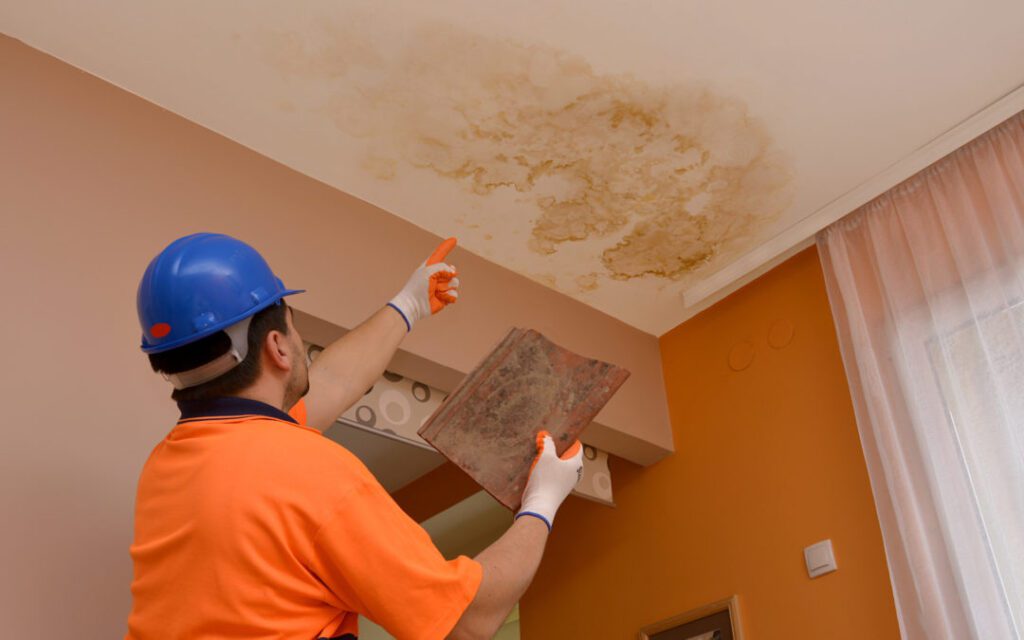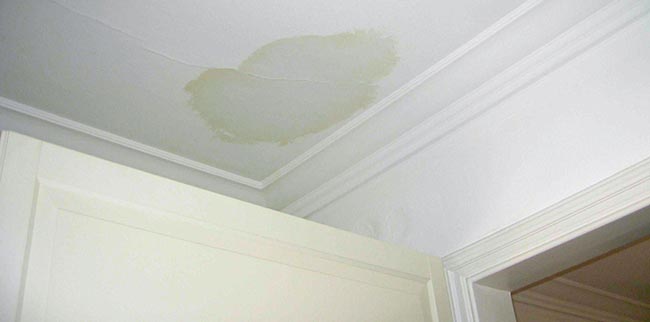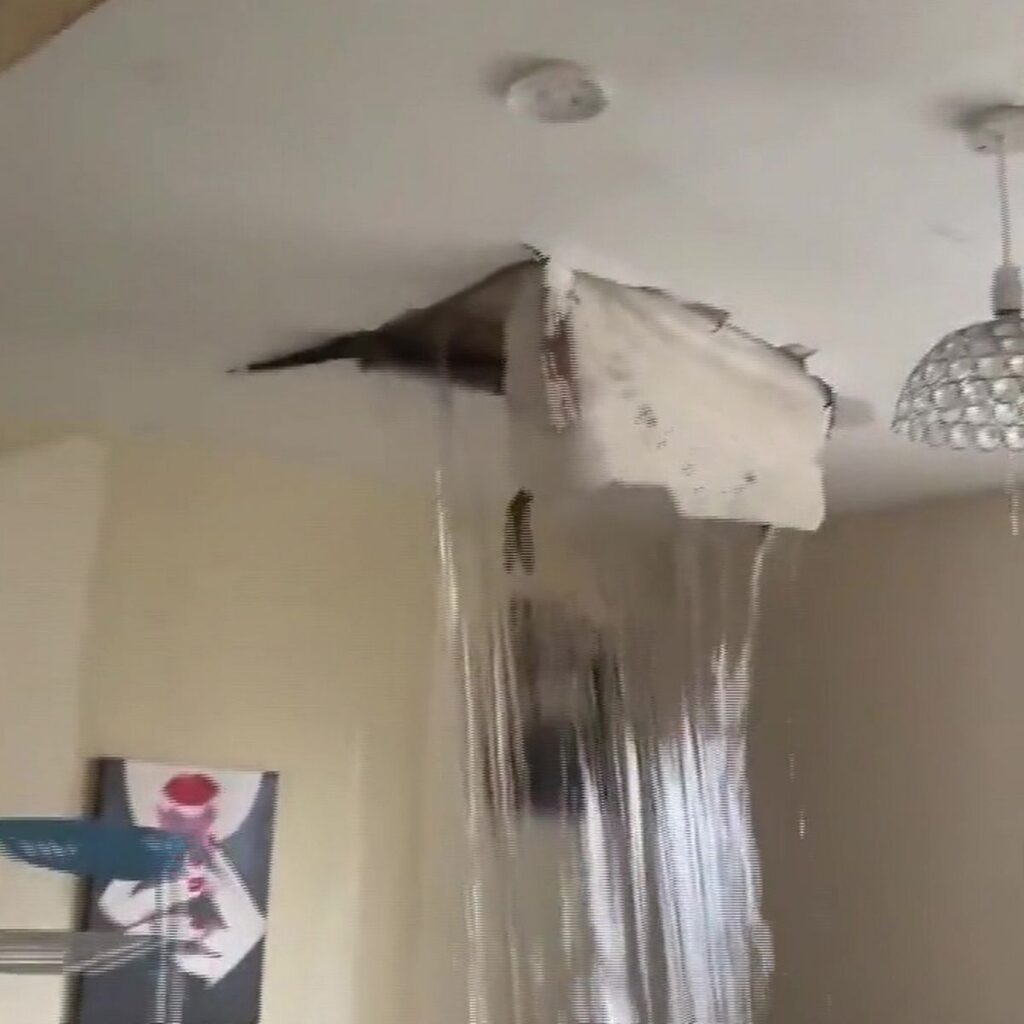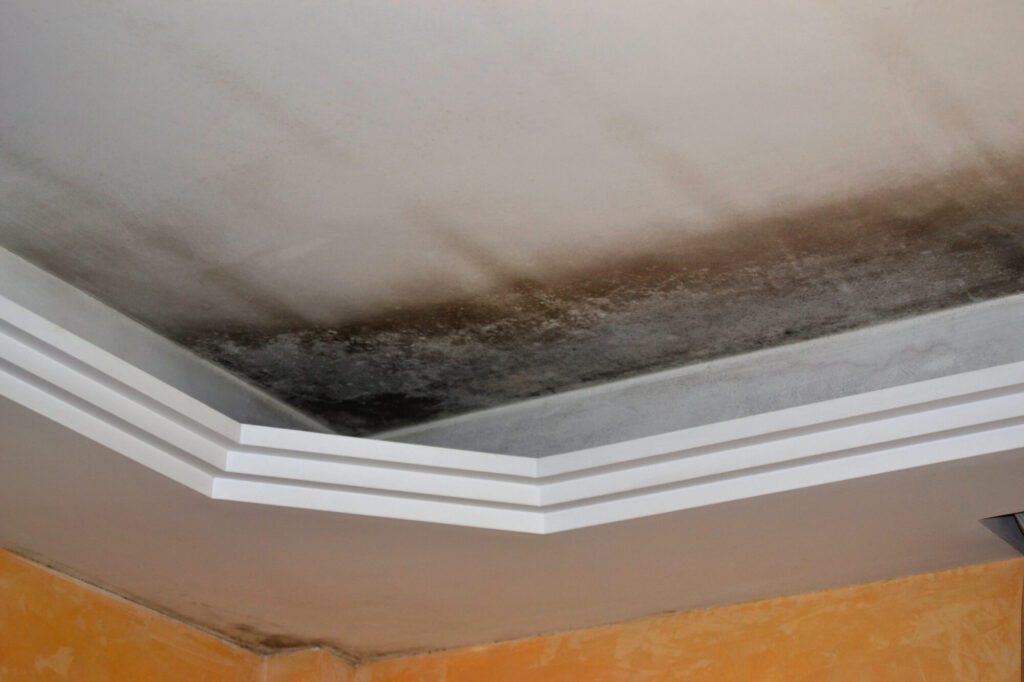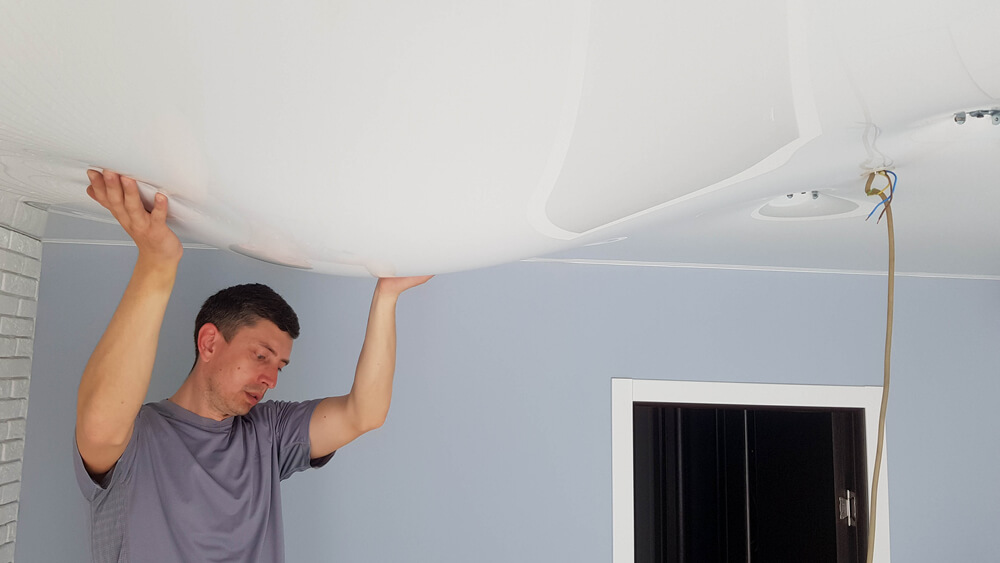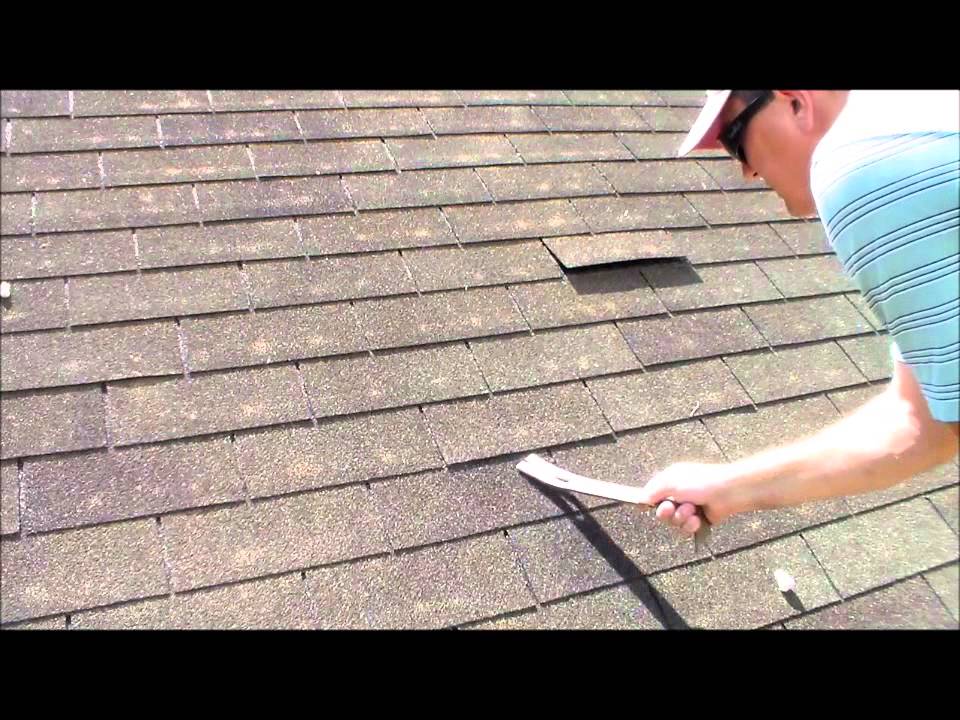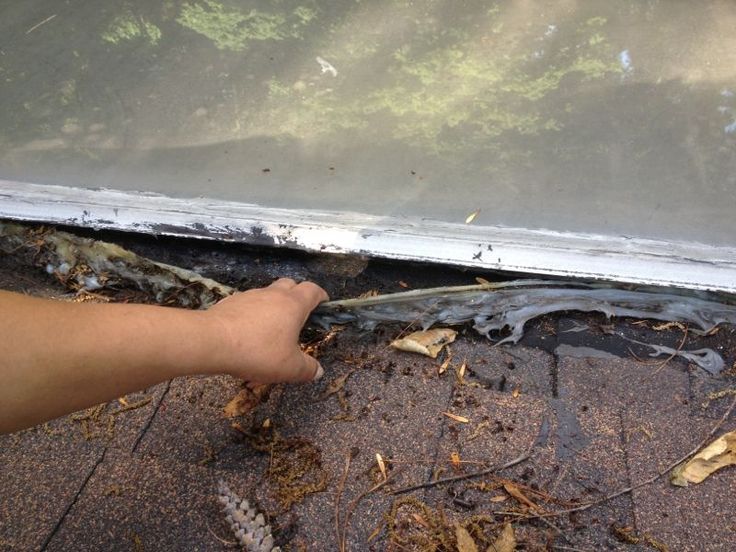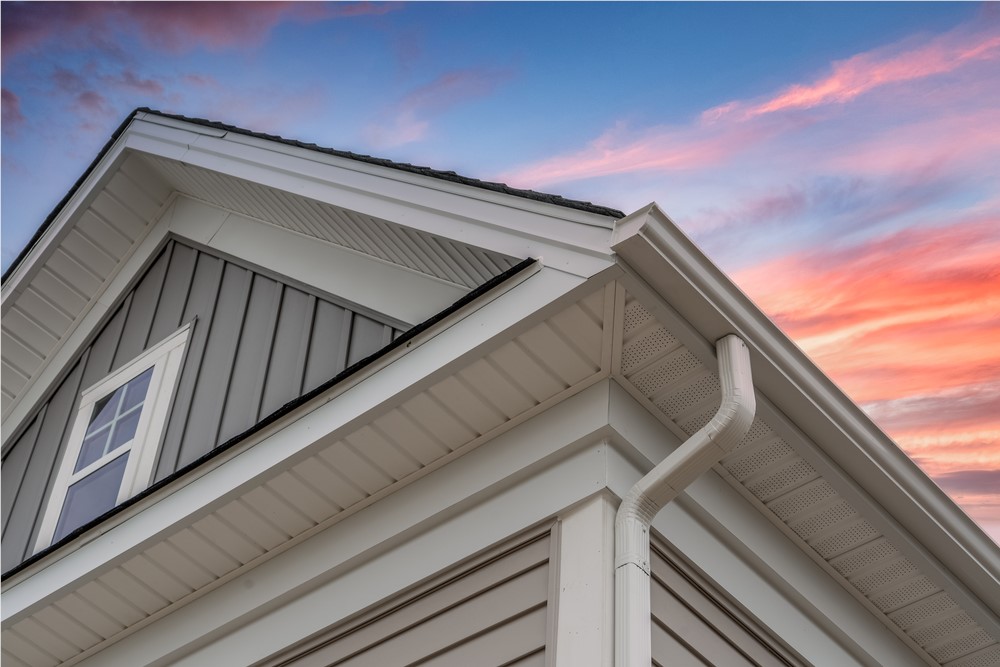Imagine waking up to the sound of dripping water. As you groggily open your eyes, you notice a growing puddle forming on your bedroom floor, originating from above. Panic sets in as you realize you have a water leak in your roof. But what does a water leak in the roof actually look like? In this article, we will explore the telltale signs of a roof leak, from water stains and mold growth to damaged ceiling materials. By understanding these indicators, you will be better equipped to detect and address this frustrating issue before it becomes a major headache.


Signs of a Water Leak in Roof
Water Stains on Ceiling
One of the most obvious signs of a water leak in your roof is the presence of water stains on the ceiling. These stains can vary in size and shape, ranging from small discolorations to larger, spreading patches. They are usually brown or yellow in color and may appear damp or dry, depending on the severity of the leak. If you notice any water stains on your ceiling, it is important to address the issue promptly to prevent further damage.
Damp or Moldy Odor
Another sign to watch out for is a damp or moldy odor in your home. When water leaks into your roof, it can seep into the insulation, drywall, and other materials, creating a conducive environment for mold and mildew growth. As these organisms thrive, they release a distinct musty smell that can become quite pervasive. If you notice this odor in your home, it may be an indication of a roof leak that requires immediate attention.
Visible Dripping or Leaking
In some cases, you may actually see water dripping or actively leaking from your ceiling. This is a clear sign that you have a significant roof leak that needs to be addressed urgently. Leaks of this nature can lead to extensive water damage to your home’s interior and can even pose a safety hazard if left unresolved. If you observe any visible dripping or leaking, it is crucial to take immediate action to prevent further harm.
Cracked or Peeling Paint
Cracked or peeling paint on your ceiling can be another indicator of a roof leak. As water seeps into the ceiling and reaches the paint layer, it can cause it to deteriorate and crack or peel. This is particularly common in areas near roof penetrations such as vents or chimneys. If you notice any unusual paint damage on your ceiling, it is important to investigate the underlying cause to determine if a roof leak is to blame.
Buckling or Sagging Ceiling
A roof leak can lead to structural damage, causing the ceiling to buckle or sag. As water continues to enter the space between your roof and ceiling, it can weaken the structural integrity of the ceiling materials. This can result in visible signs of sagging or bulging, which should not be ignored. If you notice any irregularities in the shape or structure of your ceiling, it is crucial to have a professional assess the situation and address any roof leaks promptly.
Water Pooling on the Floor
In addition to water damage on your ceiling, a roof leak can also lead to water pooling on your floor. This may occur directly beneath the source of the leak or in nearby areas if the water travels along pipes or structural elements. If you notice water pooling on your floor, it is essential to identify and address the roof leak quickly to prevent any further damage to your home and belongings.
Water Stains on Walls
Water stains on walls can also be a telltale sign of a roof leak. As water seeps through the roof and travels down, it can stain the walls along its path. These stains may appear as discolored patches or streaks and are often accompanied by other signs of water damage, such as peeling wallpaper or bubbling paint. If you notice any water stains on your walls, it is advisable to have a professional inspect your roof for any potential leaks.
The Presence of Mold or Mildew
The presence of mold or mildew in your home can indicate a recurring roof leak. These fungi thrive in damp environments and can develop rapidly in areas affected by water leaks. Mold and mildew can pose serious health risks and should never be ignored. If you notice any signs of mold or mildew, such as black or green spots on walls or a persistent musty odor, it is essential to identify and repair the roof leak as soon as possible.
Wet Insulation
If your roof is leaking, the insulation in your attic or ceiling may become wet or damp. This can result in reduced insulation effectiveness, energy loss, and even further damage to your home. Wet insulation may feel moist to the touch and can also emit a moldy odor. If you suspect that your insulation is wet due to a roof leak, it is important to address the issue promptly and consider replacing the affected insulation to prevent further problems.
Damaged Roof Materials
Damaged roof materials, such as cracked or missing shingles, can be a clear indication of a roof leak. Shingles that are cracked, curled, or have granules missing can no longer effectively protect your roof from water infiltration. Additionally, flashing or sealant around roof penetrations that are damaged or deteriorated can also lead to leaks. Regularly inspecting your roof and promptly addressing any damaged materials can help prevent roof leaks and the subsequent damage they can cause.
Common Causes of Roof Leaks
Damaged or Missing Shingles
Damaged or missing shingles are one of the most common causes of roof leaks. Shingles can become cracked, broken, or dislodged due to age, severe weather conditions, or improper installation. When shingles are compromised, water can easily seep through the roof and into your home.
Cracked or Broken Flashing
Flashing is a material usually made of metal or plastic that is used to seal gaps and joints on a roof, such as around chimneys, vents, or skylights. If the flashing becomes cracked or broken, it can no longer provide a watertight seal, allowing water to enter your home.
Faulty Roof Ventilation
Improper roof ventilation can cause moisture to accumulate in your attic, leading to condensation and eventually roof leaks. Inadequate ventilation can result from factors such as blocked vents, incorrectly installed insulation, or a lack of vents altogether. Proper roof ventilation is crucial to prevent roof leaks and maintain the overall health of your roof.
Clogged Gutters and Downspouts
Clogged gutters and downspouts can prevent proper water drainage from your roof, leading to water buildup and potential leaks. When gutters are filled with debris, such as leaves or twigs, rainwater can overflow and flow back onto the roof, seeping into the underlying materials.
Punctures or Holes in the Roof
Accidental punctures or holes in the roof can occur during construction, maintenance, or when walking on the roof. These openings can create an avenue for water to enter your home, resulting in leaks. Regular inspections and careful handling of the roof can help prevent these types of damages.
Ice Dams
Ice dams are formed when melting snow refreezes at the edge of the roof, preventing proper drainage. As water backs up behind the ice dam, it can seep under the shingles and into your home. Proper insulation, ventilation, and removal of snow from the roof can help prevent ice dams and the subsequent roof leaks.
Condensation
Excessive condensation in your attic or roof can lead to roof leaks. It can be caused by factors such as poor ventilation, insulation issues, or high humidity levels in your home. Addressing these underlying issues can help prevent condensation-related leaks.
Roofing Material Aging or Deterioration
Over time, roofing materials can deteriorate due to exposure to the elements. Aging materials, such as worn-out shingles or cracked sealant, are more prone to damage and leaks. Regular maintenance and timely replacement of aging materials can help prevent roof leaks.
Improperly Installed or Damaged Skylights
Skylights can be a beautiful addition to your home, but they can also be a common source of roof leaks if not properly installed or maintained. Damaged or incorrectly sealed skylights can allow water to penetrate your roof, causing leaks. Ensuring proper installation and regular inspections of skylights can help prevent these issues.
Leaks in Plumbing or HVAC Systems
While not directly related to your roof, leaks in your plumbing or HVAC systems can lead to water damage that can ultimately affect your roof. Water leaks from pipes, air conditioning units, or water heaters can seep into your walls and ceilings, compromising the integrity of your roof. Regularly inspecting and maintaining your plumbing and HVAC systems can help prevent these types of leaks.


How to Identify a Roof Leak
Inspect the Attic
When trying to identify a roof leak, it is important to start with a thorough inspection of your attic or crawl space. Look for signs of moisture, such as wet insulation or water stains on the underside of the roof decking. Use a flashlight to thoroughly examine the area and identify the most likely sources of the leak.
Examine the Ceiling
Inspect the interior of your home, paying close attention to the ceilings. Look for any discoloration, stains, or bubbling paint, as these can indicate a roof leak. Follow the water stains back to their source to help determine the location of the leak.
Check the Roof Exterior
Carefully inspect the exterior of your roof for any visible signs of damage or deterioration. Look for cracked, missing, or damaged shingles, as well as problems with the flashing around roof penetrations. Use caution when accessing your roof and consider hiring a professional if you are not comfortable doing so.
Monitor for Water Damage Progression
If you suspect a roof leak but are unable to identify the exact source, it can be helpful to monitor the progression of any water damage. Take note of any changes or increases in water stains, mold growth, or other signs of water intrusion. This information can be valuable when consulting with a professional for further inspection.
Have a Professional Inspection
If you are unable to identify the source of a roof leak or if you are not comfortable conducting the inspection yourself, it is advisable to hire a professional roofing contractor. They have the expertise and specialized equipment to identify and address roof leaks effectively. A professional inspection can also provide you with a more accurate assessment of the overall condition of your roof.
Use a Thermal Imaging Camera
Thermal imaging cameras can be a useful tool in detecting roof leaks. These cameras can detect temperature differences that may indicate the presence of moisture. By identifying these temperature variations, professionals can pinpoint the exact location of a roof leak and take appropriate action.
Perform a Water Test
If you have narrowed down the potential areas where the roof leak may be occurring, you can perform a water test to confirm the source. With the help of a friend, use a garden hose to spray water on specific areas of your roof while someone else monitors the interior for any signs of water intrusion. This method can help isolate the exact location of the leak.
Monitor for Indoor Humidity Changes
A sudden increase in indoor humidity levels can be an indication of a roof leak. Use a hygrometer or humidity meter to monitor the humidity levels in your home. If you notice a significant change or increase in humidity, especially in the areas below the roof, it may be a sign of a roof leak.
Investigate the Surrounding Area
When trying to identify a roof leak, it is important to investigate the surrounding area as well. Check for any signs of damage or leaks in nearby walls, chimneys, skylights, or vents. Water can travel along pipes or structural elements, so it is crucial to thoroughly inspect the entire area for potential sources of leaks.
Follow Musty or Moldy Odors
Musty or moldy odors in your home can often lead you to the source of a roof leak. These odors are typically caused by moisture and mold growth. If you notice a persistent musty smell, particularly in areas near the ceiling or roof, it is important to investigate further and identify any potential roof leaks.
Potential Consequences of Ignoring Roof Leaks
Structural Damage
Ignoring roof leaks can lead to significant structural damage. Over time, water intrusion can weaken the integrity of your roof, ceiling, and supporting structures. This can result in costly repairs and even compromise the safety of your home.
Mold and Mildew Growth
Roof leaks create a damp environment that is conducive to mold and mildew growth. These organisms can quickly multiply and spread throughout your home, damaging not only your property but also posing potential health risks to you and your family.
Insulation Damage and Reduced Energy Efficiency
Water leaks in the roof can damage insulation materials, reducing their effectiveness and leading to poor energy efficiency in your home. Insulation that becomes wet or damaged loses its ability to regulate temperature, resulting in higher energy bills and discomfort.
Higher Risk of Fire
Water leaks can come into contact with electrical wiring in your home, increasing the risk of fire. Water is a conductor of electricity, and if it reaches exposed or faulty wiring, it can potentially lead to electrical shortages or even spark fires.
Health Issues
Exposure to mold and mildew can cause a range of health issues, including respiratory problems, allergic reactions, and irritations of the eyes, nose, and throat. Ignoring roof leaks and allowing mold growth to persist can put you and your family’s health at risk.
Reduced Property Value
Untreated roof leaks can lead to significant damage that can diminish the value of your property. When the time comes to sell your home, a compromised roof and the resulting problems may lead to negotiations on price and potentially deter potential buyers.
Increased Repair Costs
The longer a roof leak goes unaddressed, the more extensive the damage becomes, resulting in higher repair costs. Initially minor roof leaks can quickly escalate into major issues that require extensive repairs or even the replacement of your entire roofing system.
Compromised Roofing System Integrity
Roof leaks can compromise the integrity of your entire roofing system. Once water seeps into the underlying structures, it can accelerate the deterioration of roofing materials, leading to further leaks and potential collapse.
Decreased Lifespan of Roof Materials
Roof leaks can significantly shorten the lifespan of your roof materials. The constant exposure to water can cause materials such as shingles, flashing, and sealant to deteriorate at an accelerated pace. Regular maintenance and prompt repairs can help extend the lifespan of your roof.
Possible Ceiling Collapse
In severe cases, the continuous water intrusion from a roof leak can lead to weakened ceilings and eventually a ceiling collapse. This poses a serious safety risk to occupants and can result in extensive damage to your home and belongings.
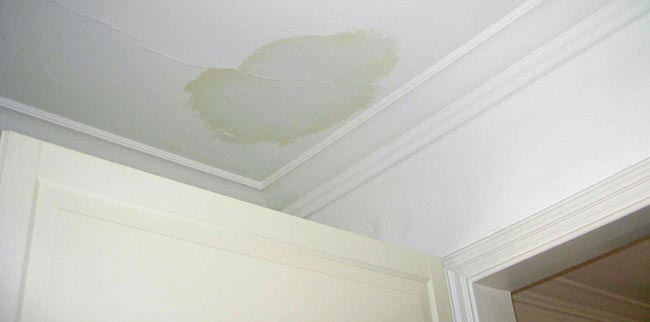

Prevention and Maintenance for Avoiding Roof Leaks
Regular Roof Inspections
Schedule regular roof inspections by a professional to identify and address any potential issues before they become major problems. Inspections should ideally be conducted at least once a year, as well as after severe weather events.
Keeping Gutters and Downspouts Clear
Regularly clean and maintain your gutters and downspouts to ensure proper water drainage and prevent clogs. Clear away leaves, debris, and any other obstructions that can impede the flow of water.
Pruning Nearby Trees and Branches
Trim back any overhanging tree branches or vegetation that may come into contact with your roof. Falling branches or excessive foliage can cause damage to your roof, such as dislodging shingles or damaging flashing.
Maintaining Proper Roof Ventilation
Ensure your roof has adequate ventilation to prevent moisture buildup. This includes proper intake and exhaust vents to promote air circulation and prevent condensation in the attic or roof space.
Inspecting and Maintaining Skylights
Regularly inspect and maintain skylights to prevent leaks. Check for cracks, damaged seals, or any signs of water intrusion. Address any issues promptly to avoid potential roof leaks.
Addressing Plumbing and HVAC System Leaks
Regularly inspect and maintain your plumbing and HVAC systems to prevent water leaks that can damage your roof. Fix any leaks or drips promptly to avoid prolonged water exposure.
Taking Prompt Action on Any Signs of Damage
Address any signs of roof damage promptly to prevent leaks from occurring. Whether it is cracked or missing shingles, damaged flashing, or any other visible issues, take immediate action to rectify the problem.
Removing Debris from the Roof
Regularly remove any debris that accumulates on your roof, such as leaves, branches, or dirt. Debris can trap moisture and cause damage to your roof materials, leading to potential leaks.
Checking for Storm Damage
After severe weather events, such as heavy rain, strong winds, or hail, thoroughly inspect your roof for any signs of damage. Address any issues promptly to prevent water leaks in the future.
Using Quality Materials and Proper Installation
When installing or repairing your roof, use high-quality materials and ensure proper installation. Quality materials and skilled installation are essential for a durable and leak-resistant roof.
Conclusion
A water leak in your roof can lead to significant damage and costly repairs if left unaddressed. By familiarizing yourself with the signs of a roof leak, understanding the common causes, and knowing how to identify and prevent them, you can take proactive measures to protect your home. Regular maintenance, prompt repairs, and professional inspections are key to maintaining the integrity of your roof and avoiding the potential consequences of roof leaks. Remember, a small leak today can turn into a major problem tomorrow, so always prioritize the health and longevity of your roof.
